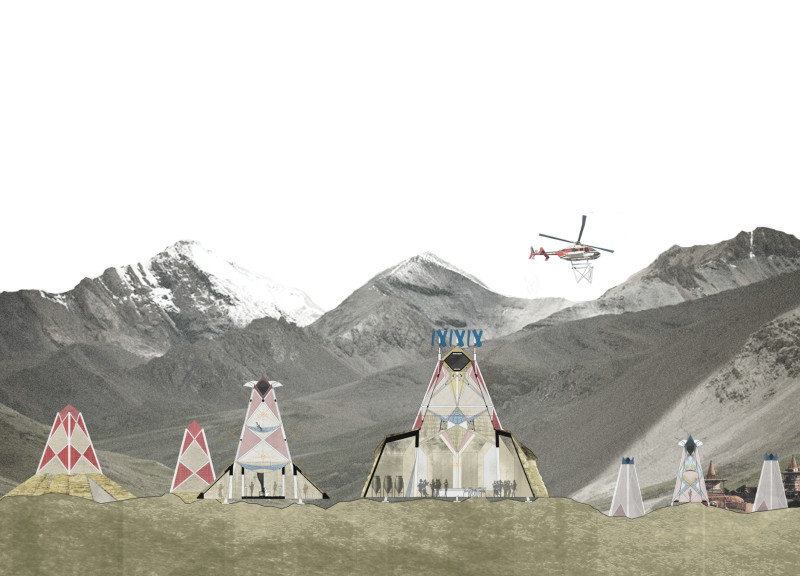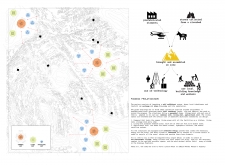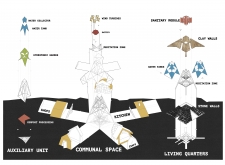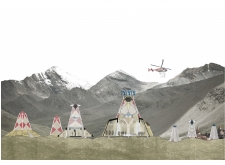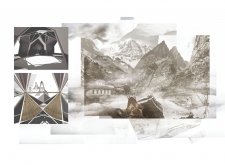5 key facts about this project
## Overview
The architectural design entity known as "Pagodic Proliferation" is situated in the Himalayan region, aiming to establish a self-sufficient environment that caters to both local residents and visitors. The project is founded on the principle of fostering interaction and cultural exchange through communal spaces, while prioritizing sustainability. The design draws on traditional local architectural forms and integrates contemporary materials and technologies to create functional structures that meet the diverse needs of the community.
## Spatial Organization
The project is structured around a central communal unit that serves as a multifunctional hub, from which various functional zones radiate. Key elements include:
- **Communal Unit**: Centralized space for living, dining, and communal gatherings.
- **Living Units**: Private quarters equipped with sustainable amenities, including hydroponic gardens for food production.
- **Agricultural Units**: Designated areas for cultivating crops, utilizing innovative water-conserving techniques appropriate for the regional climate.
This layout facilitates social interaction while maintaining necessary privacy, addressing the dual objectives of fostering community centeredness and providing individual living space.
## Materiality and Systems
The design emphasizes the use of locally sourced materials alongside modern prefabricated components:
- **Natural Stone**: Collected from local riverbeds, providing structural integrity.
- **Prefabricated Steel**: Enhances construction efficiency and site assembly.
- **Clay Walls**: Contribute to thermal comfort and aesthetic integration with the natural surroundings.
- **Hydroponic Systems**: Support water-efficient agricultural practices.
- **Renewable Energy Solutions**: Incorporation of wind turbines underscores a commitment to sustainability.
Local building knowledge informs construction practices, ensuring that traditional techniques are respected while modern methodologies are employed. The project also integrates systems for waste recycling and composting, promoting an eco-centric approach and the cultivation of an engaging cultural landscape.


